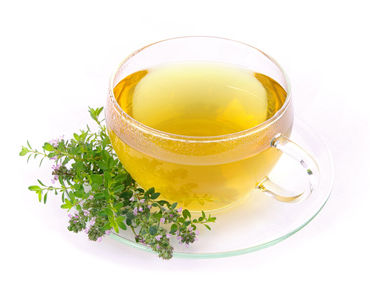I have a large, leggy thyme plant in my kitchen. It grew to abundance over the summer, and I rescued it from the back deck when the first snows hit in late October. This time of year, it spends most days on my kitchen floor, near the sliding glass door, surviving on moderate temperatures and meager sunlight.
Fresh thyme is a wonderful kitchen herb – I can’t imagine cooking without it. I toss thyme springs into sauces, place the tiny scented leaves under the skin of chicken and toss with cauliflower when roasting.
But don’t let those delicate leaves fool you. Thyme has power beyond fragrance and taste:
Thyme as a Digestive Aid
Like many herbs, thyme actually benefits digestion. This one helps dislodge the mucus coating of the intestinal tract. The oils in thyme have helpful gas-reducing properties. And thyme can help relieve intestinal cramping.
Antioxidant Properties of Thyme
Thyme’s health-supporting benefits are well documented. In one study on aging rats, thymol (the primary volatile oil in thyme) was found to protect and significantly increase the percentage of healthy fats found in cell membranes and other cell structures. Thyme also contains a variety of flavonoids that increase its antioxidant capacity.
Thyme for Respiratory Relief
Thyme has a long history as a remedy for coughs and bronchitis. Perhaps that is why thymol is found in many over-the-counter cough drops and vapor rubs. Try the thyme “tea” recipe below for coughs and bronchitis.
Thyme – A Powerful Antimicrobial
Thyme oil has demonstrated significant antimicrobial activity. Research has shown that thyme essential oil can decontaminate Shigella on lettuce. Adding fresh thyme to your salad dressing is more than just a flavorful idea! And thymol can be found in natural, non-toxic kitchen cleaners like the one I use in my own kitchen. It kills Staph aureus, Bacillus subtilis, E. coli and other nasty kitchen invaders in minutes.
Easy Thyme “Tea”
Steep 1 teaspoon dried thyme (or 2 teaspoons fresh) in 2 cups of boiling water for 4-5 minutes. Enjoy with a lovely thyme honey, or cool and use as a gargle 3 times a day to reduce inflammation.
What is your favorite way to use thyme?









Leave A Comment